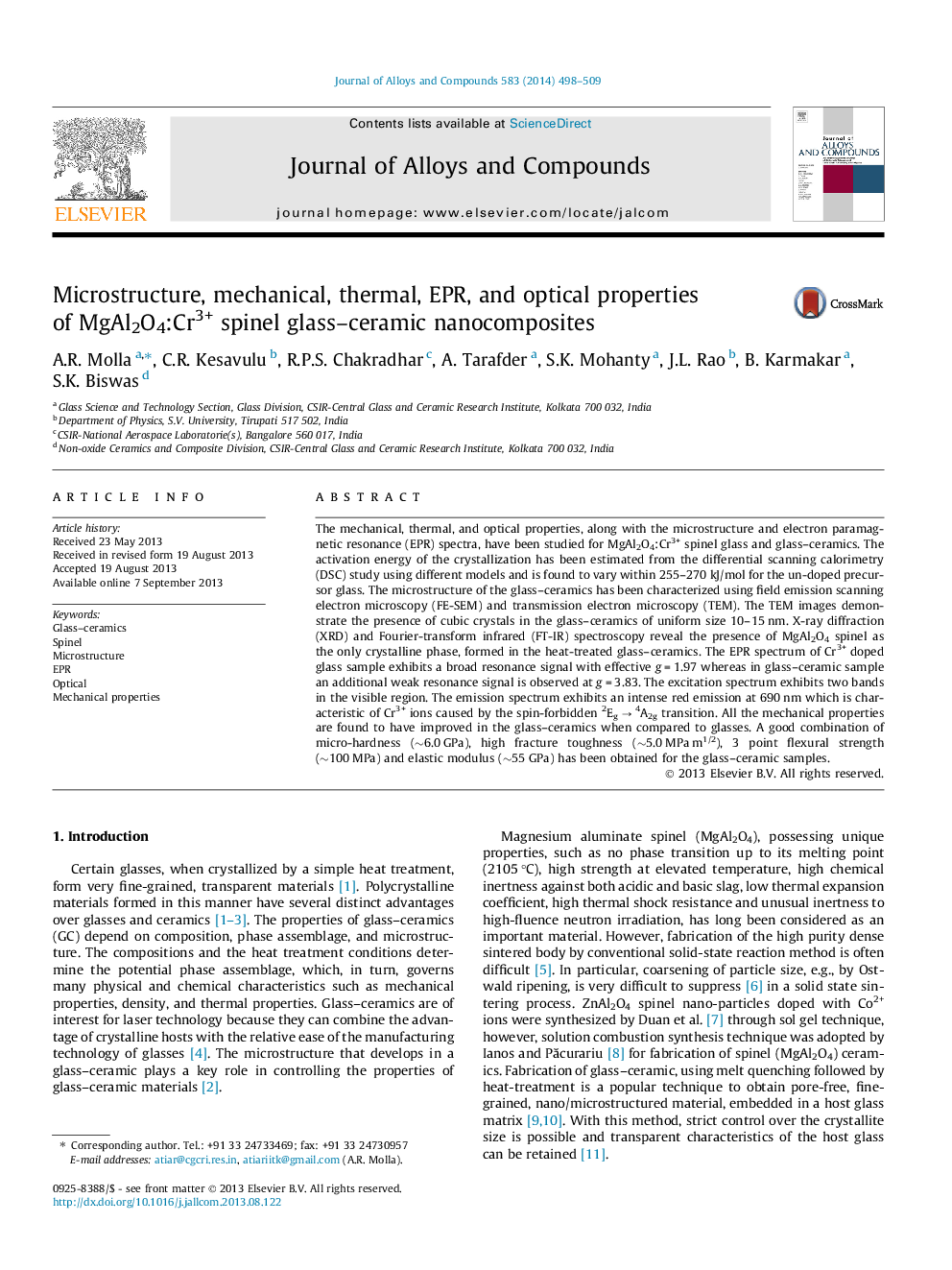| Article ID | Journal | Published Year | Pages | File Type |
|---|---|---|---|---|
| 1612802 | Journal of Alloys and Compounds | 2014 | 12 Pages |
Abstract
The mechanical, thermal, and optical properties, along with the microstructure and electron paramagnetic resonance (EPR) spectra, have been studied for MgAl2O4:Cr3+ spinel glass and glass-ceramics. The activation energy of the crystallization has been estimated from the differential scanning calorimetry (DSC) study using different models and is found to vary within 255-270 kJ/mol for the un-doped precursor glass. The microstructure of the glass-ceramics has been characterized using field emission scanning electron microscopy (FE-SEM) and transmission electron microscopy (TEM). The TEM images demonstrate the presence of cubic crystals in the glass-ceramics of uniform size 10-15 nm. X-ray diffraction (XRD) and Fourier-transform infrared (FT-IR) spectroscopy reveal the presence of MgAl2O4 spinel as the only crystalline phase, formed in the heat-treated glass-ceramics. The EPR spectrum of Cr3+ doped glass sample exhibits a broad resonance signal with effective g = 1.97 whereas in glass-ceramic sample an additional weak resonance signal is observed at g = 3.83. The excitation spectrum exhibits two bands in the visible region. The emission spectrum exhibits an intense red emission at 690 nm which is characteristic of Cr3+ ions caused by the spin-forbidden 2Eg â 4A2g transition. All the mechanical properties are found to have improved in the glass-ceramics when compared to glasses. A good combination of micro-hardness (â¼6.0 GPa), high fracture toughness (â¼5.0 MPa m1/2), 3 point flexural strength (â¼100 MPa) and elastic modulus (â¼55 GPa) has been obtained for the glass-ceramic samples.
Related Topics
Physical Sciences and Engineering
Materials Science
Metals and Alloys
Authors
A.R. Molla, C.R. Kesavulu, R.P.S. Chakradhar, A. Tarafder, S.K. Mohanty, J.L. Rao, B. Karmakar, S.K. Biswas,
